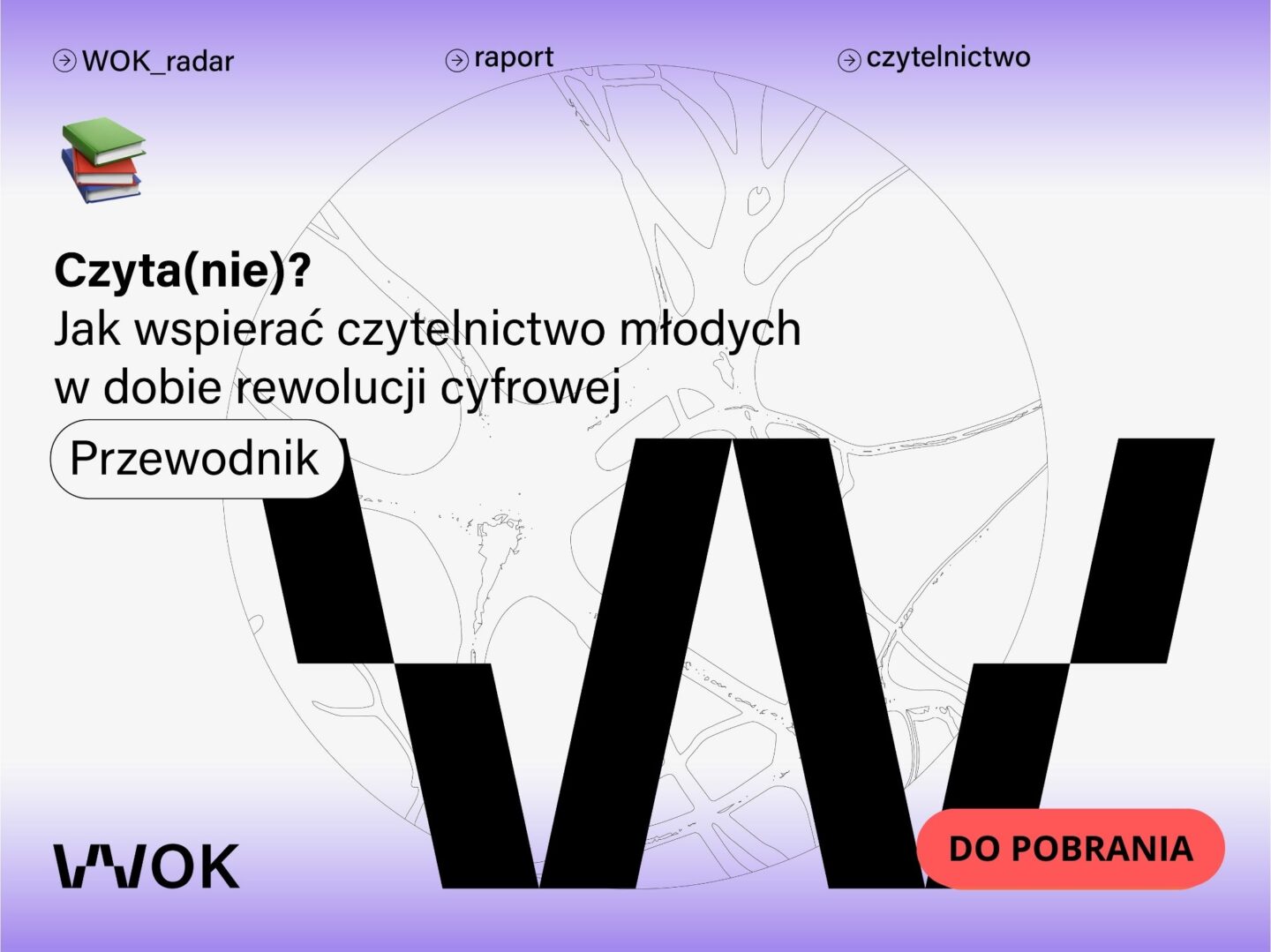“To read or not to read? How to support young adults reading in the midst of a digital revolution”. The release of the Warsaw Observatory of Culture’s Guide
The new publication released by the Warsaw Observatory of Culture is a practical follow-up to the research report we published last year. The stakes are high; in the report we diagnosed the major challenges and needs related to reading among children and young adults, and those who support them. The aim of the guide, on the other hand, is to support in action – everyone who is there for children and young adults when they read: teachers, librarians, educators and people working in cultural institutions, but also parents. The guide suggests how to support them on their way to attentive, critical and genuinely enjoyable reading; shows how to create spaces where books are no longer an unpleasant chore. The publication provides tools for everyday work of the practitioners and can be used as training material.
The guide includes:
experience-and-research-verified strategies for working with books at school, in the library and at home,
articles written by experts in the field: Joanna Dobkowska, PhD and Maciej Skowera, PhD,
questions and challenges that can be posed both to your students at different stages of educational work with the text and to yourself,
a set of specific organisations, campaigns and resources that support reading growth,
tools helpful in identifying the needs of children and young adults, including those who are neuroatypical, non-Polish-speaking or otherwise at risk of exclusion.
The content in the guide relates to the report, forming a coherent whole. Thus, you can start with the guide and then reach for the in-depth analyses. Or, vice versa, treat the report as a starting point, and the guide as a set of tangible solutions.
W środku znajdują się:
- sprawdzone strategie pracy z książką w szkole, bibliotece i w domu;
- teksty eksperckie dr Joanny Dobkowskiej i dra Macieja Skowery;
- pytania i wyzwania, które można stawiać sobie i osobom uczniowskim na różnych etapach edukacyjnej pracy z tekstem;
- karty inicjatyw – zestaw konkretnych organizacji, kampanii i źródeł, które wspierają rozwój czytelnictwa;
- narzędzia do rozpoznawania potrzeb dzieci i młodzieży – także tych neuroatypowych, niepolskojęzycznych czy z innych powodów zagrożonych wykluczeniem.
Zawarte w Przewodniku treści odnoszą się do raportu, tworząc z nim spójną całość. Możesz więc zacząć od Przewodnika, a potem sięgnąć po pogłębione analizy. Albo odwrotnie – traktować raport jako punkt wyjścia, a publikację jako zestaw konkretnych rozwiązań.







